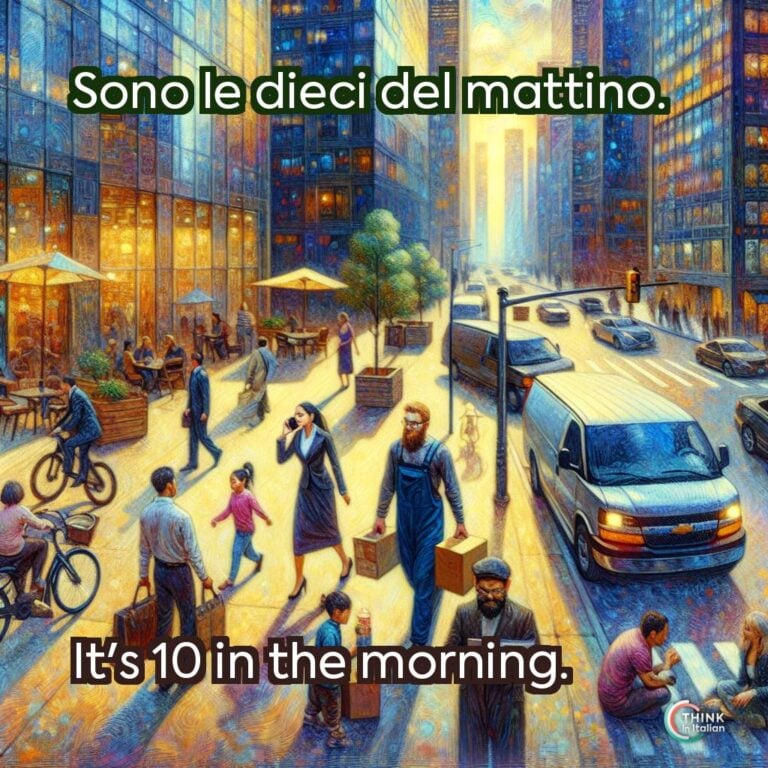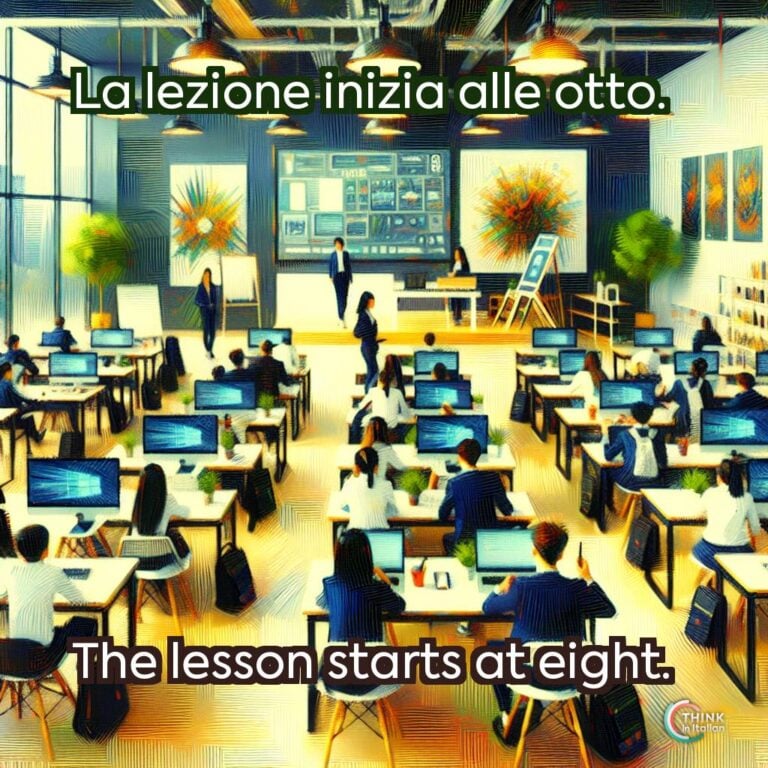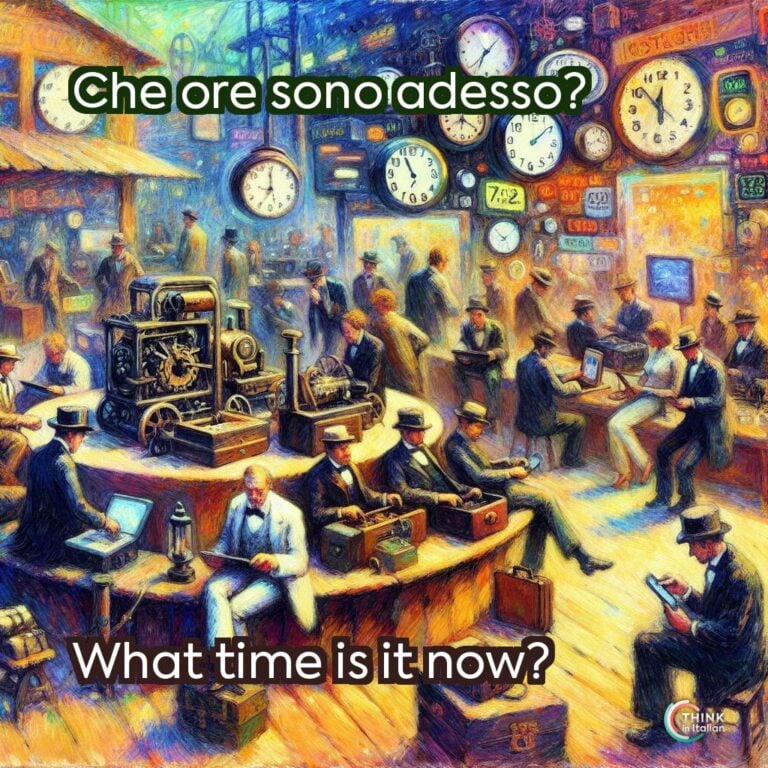How to Tell the Time in Italian
The most common phrases you’ll hear when asking for the time in Italy are che ore sono? or che ora è? (what time is it?). The former uses the plural noun ore (hours) while the latter uses the singular ora, but both are used interchangeably.
Do you know the Italian numbers already? Then you’re ready to answer these questions by using the following structure:
Sono le [ora].
It’s [hour].
We normally conjugate the verb essere (to be) in the third person plural because most of the hours are plural. The exception to this rule is for una (one), mezzogiorno (midday) and mezzanotte (midnight) where you use the singular form:
Sono le 17.
It’s 17.
È l’una.
It’s 1:00.
The contraction of the definite article la to l’ before una occurs because una begins with a vowel. For all other hours, we use the plural article le.
How to Express the Time in Italian
Add Minutes to Your Time Expression
Now that you’ve got the hours down, let me explain you how to add minutes. Just like in English, imagine you have to split the clock in two halves: from zero to 30 minutes and from 31 minutes to the whole hour.
In Italian, when the minutes are in the first half of the clock, we use the conjunction e (and) to link the hour with the minutes, as in:
Sono le due e cinque.
It’s 2:05. (lit: it’s two and five)
Sono le tre e venti.
It’s 3:20. (lit: it’s three and twenty)
If the minutes are in the second part of the clock, you can choose: either you keep on adding them as I showed you before, or you count backward to the next hour using the word meno (minus):
Sono le sei e cinquanta.
It’s 6:50. (lit. it’s six and fifty).
Sono le quattro meno dieci.
It’s 3:50. (lit: it’s four minus ten).
Sono le sette meno un quarto.
It’s 6:45. (it’s seven minus a quarter).
Quarter-Hours and Half-Hours
As you might have noticed from the previous example, we do have some expressions to indicate specific amounts of minutes, just like in English.
In the sentence I wrote before, un quarto refers to “a quarter” of an hour, just like the English expression. Another fixed expression is mezza or mezzo to say “half”:
Sono le sei e un quarto.
It’s 6:15.
Sono le nove e mezza.
It’s 9:30.
AM and PM in Italian
Unlike in English, we rarely use “AM” and “PM”. Instead, we rely on context to clarify whether a time is in the morning, afternoon, or evening. To specify this, you can simply add one of the following phrases after the time:
- Di mattina – In the morning
- Del pomeriggio – In the afternoon
- Di sera – In the evening
- Di notte – At night
Let me show you some examples:
Sono le otto di mattina.
It’s 8:00 in the morning.
Sono le otto di sera.
It’s 8:00 in the evening.
È l’una di notte.
It’s 1:00 at night.
Telling the Time in Real Life
There are some further expressions I want you to know to properly master the time in Italian.
For example, if you want to set appointments or be informed about when events will take place, save this phrase:
A che ora…?
At what time…?
And then enrich it the way you need to. Here I’ll give you some practical examples:
A che ora parte il treno?
What time does the train leave?
A che ora arrivi?
What time are you arriving?
Another important word is the adverb quasi (almost). It is used exactly like its English counterpart, therefore you can say something like:
È quasi mezzogiorno.
It’s almost noon.
Finally, it’s useful to familiarize yourself with some common expressions related to time. These phrases can help you describe more nuanced situations involving time:
- In anticipo – Early
- In ritardo – Late
- Puntuale – On time
- Prima – Before
- Dopo – After
Use them in sentences like these:
Siamo in anticipo di dieci minuti.
We’re ten minutes early.
Il treno è in ritardo di mezz’ora.
The train half hour is late.




